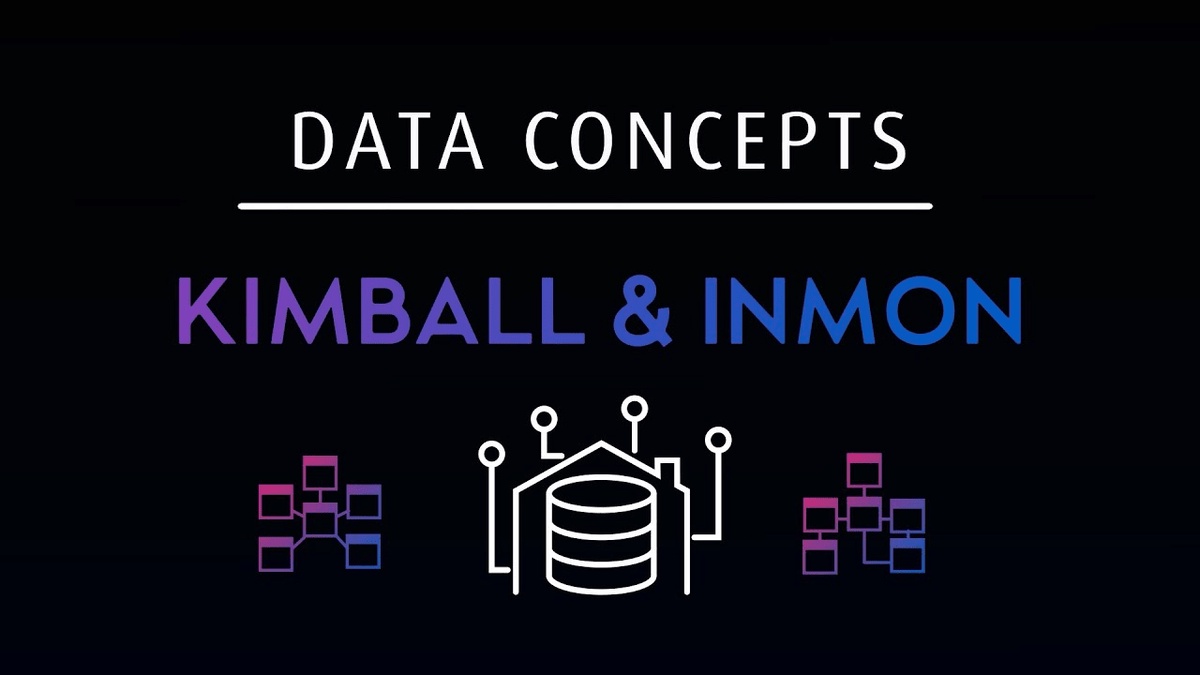The Dueling Titans of Data Warehousing In the expansive universe of data warehousing, two names resonate with a reverence akin to legendary titans: Ralph Kimball and Bill Inmon. Their philosophies, though distinct, have imprinted the very foundation of how we approach, construct, and perceive data storage. Decades later, data engineers are still torn between these two schools of thought. As we delve deeper into their teachings, let's demystify this age-old debate.
Inmon’s Enterprise Data Warehouse
The All-encompassing Behemoth Bill Inmon often hailed as the 'father of data warehousing', introduced the world to the Enterprise Data Warehouse (EDW). His vision was ambitious - a centralized repository storing every fragment of organizational data. Using a 'top-down' approach, the EDW epitomizes meticulous planning. With its normalized data structures, the primary aim is to eliminate redundancy and maintain unparalleled consistency.
Pros:
Centralized Decision-making: Offering a holistic, bird's eye view of enterprise data, EDW becomes a singular point of decision-making.
Consistency: By reducing data redundancy, it ensures that data remains consistent across the organization.
Cons:
Initial Setup: The comprehensive nature makes its initial setup time-consuming.
Rigidity: Due to its overarching design, any changes or adaptations may require significant effort.
Kimball's Dimensional Modeling
Agility and Business-centricity On the other spectrum, Ralph Kimball took a more business-centric route. Kimball introduced the world to the star and snowflake schema—core components of dimensional modeling. Here, the emphasis shifts to the business process, with development being more iterative, catering to specific business needs. This 'bottom-up' approach produces de-normalized data, tailored for swift querying and reporting.
Pros:
Immediate ROI: Given its piecemeal approach, organizations can see quicker returns.
Flexibility: Adaptable to changing business needs, making it inherently scalable.
Cons:
Data Redundancy: Its de-normalized structure can sometimes lead to data repetition.
ETL Complexity: Given the de-normalized approach, ETL processes can sometimes become intricate.
ETL vs. ELT
The Process Paradigm and its Influence on the Debate The debate further intensifies when we discuss data processing. ETL (Extract, Transform, Load) has been the backbone of Inmon's philosophy. The idea is to cleanse and transform data before it finds its way into the warehouse. On the contrary, Kimball has shown a tendency towards ELT (Extract, Load, Transform), where raw data is loaded, and transformations occur within the warehouse.
This divergence isn't merely procedural but philosophical. It brings to the forefront questions about data integrity, processing speed, and adaptability.
Real-world Implementations
Case Studies Exemplifying Each Approach Numerous organizations have embraced either philosophy, reaping their respective benefits. For instance, large-scale conglomerates with vast data sources often find solace in Inmon’s EDW, relishing the consolidated data overview it provides. On the flip side, agile startups and mid-sized businesses, looking for quick actionable insights, have frequently leaned towards Kimball's dimensional modeling.
However, it's pivotal to understand that neither approach is universally superior. The choice heavily depends on organizational needs, existing infrastructure, and long-term data strategy.
Hybrid Methodologies: Marrying the Best of Both Worlds
As with most things in technology, evolution has given birth to hybrid methodologies. Pioneering organizations are fusing Inmon’s expansive architecture with Kimball's agility. This synthesis ensures a robust, centralized data structure while retaining the flexibility to cater to immediate business processes.
Such hybrid data warehouses reap benefits like streamlined ETL processes, reduced redundancy, and faster query responses, presenting a compelling case for those on the fence about the Kimball vs. Inmon debate.
The Role of Modern Tools & Data Warehouse Automation in the Debate
The landscape of data warehousing is not static. Modern tools like Snowflake, Redshift, and BigQuery are reshaping our perceptions. Furthermore, the surge in data warehouse automation is rendering some traditional debates moot.
With automation handling many intricacies, the lines between Kimball and Inmon blur. It's no longer about which method to choose, but how to integrate modern tools with these foundational philosophies effectively.
Final Words
The Future of the Debate and the Quest for the Ultimate Source of Truth The Kimball vs. Inmon debate is not just a technical dispute; it's a testament to the ever-evolving realm of data warehousing. As new tools and methodologies emerge, we must remember that these philosophies provide the bedrock upon which our modern understanding is built.
While choosing a side might seem imperative, the real quest is in understanding the nuances of each approach, adapting them to current needs, and always striving toward the elusive 'Ultimate Source of Truth.'


No comments yet